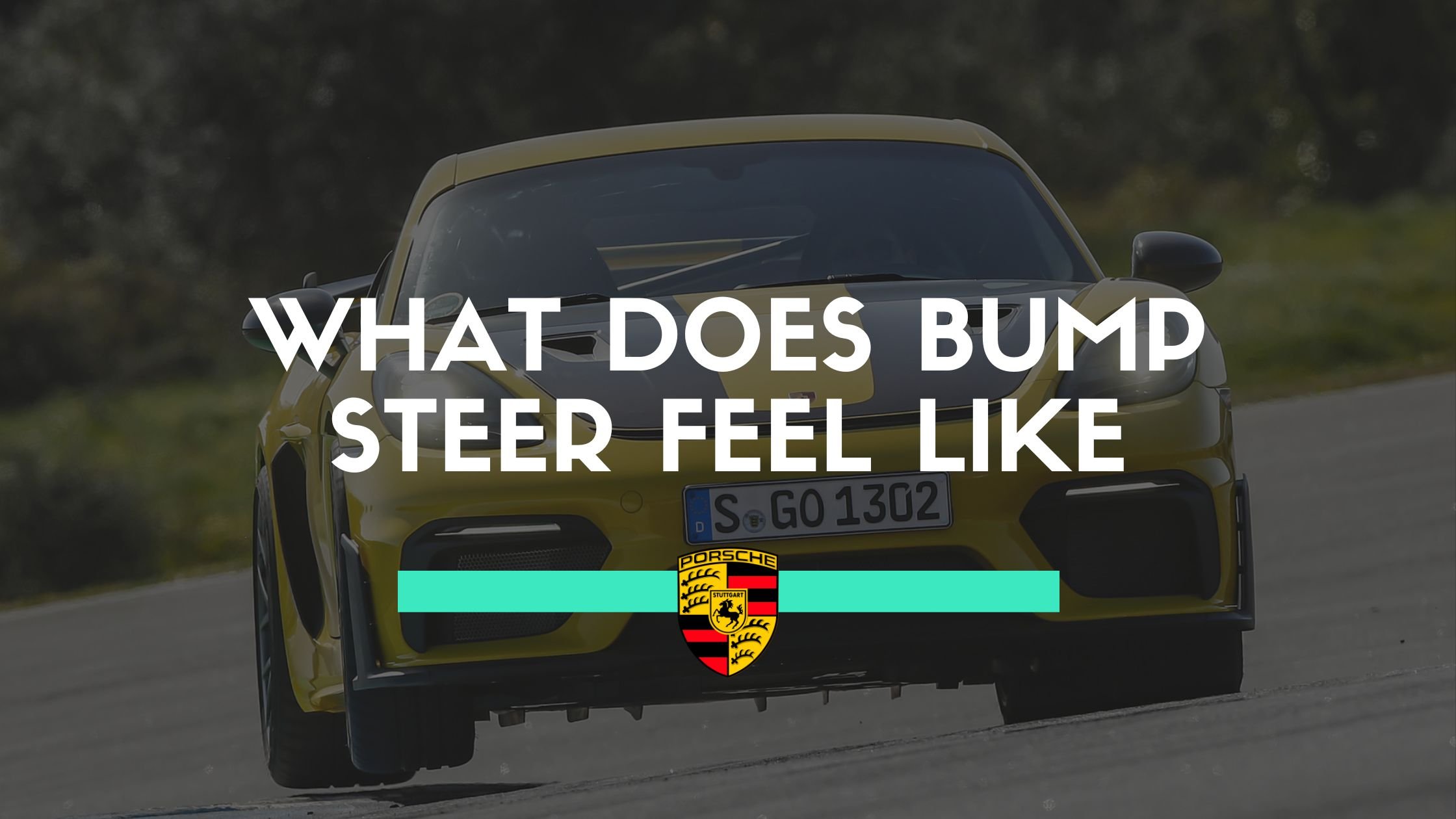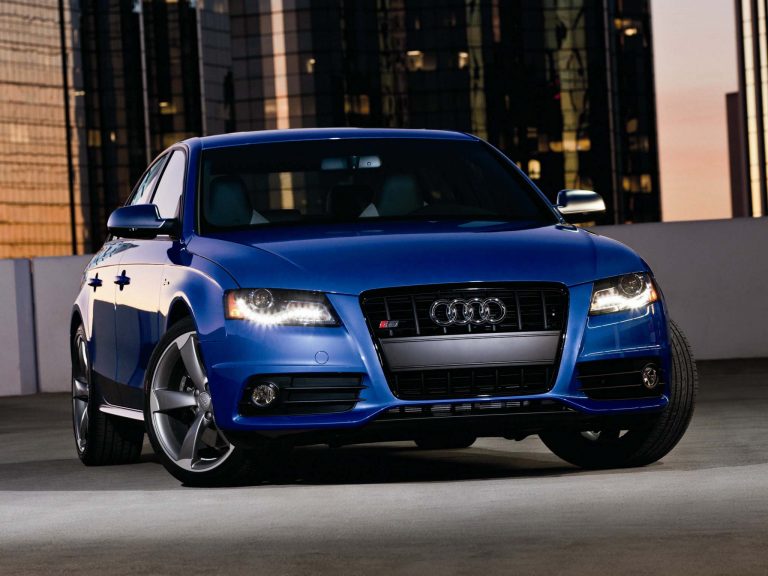What Does Bump Steer Feel Like?
Bump steer is no fun for anyone. But, for most people, it isn’t something we think about all too often. Nor is it something we might even know that we are dealing with. In an attempt to selflessly rectify this problem, we have written a helpful blog post on what does bump steer feel like. As it can happen in any car, from a Maserati to a Porsche.
This blog covers what bump steer is, what it feels like, what the signs are to look out for if you aren’t sure you are dealing with bump steer, as well as some suggestions on how to rectify the situation.
And, because we know you’ll be curious, we will talk briefly about Porsche‘s reaction to bump steer, can they fix it, will they fix it, and how much will they potentially hang you out to dry for. Let’s dive right into it together.
Highlights
- Bump steer is a term used in automotive engineering to describe the tendency of a vehicle’s wheels to steer themselves during vertical movements, such as hitting a bump or pothole.
- When experiencing bump steer, the car may feel like it’s changing direction without driver input, pulling to one side, or causing the steering wheel to jerk out of the driver’s hands.
- Signs of bump steer include instability, difficulty maintaining control, imprecise steering, noise or vibrations when hitting bumps, and uneven tire wear.
- Fixing bump steer typically involves identifying the underlying cause, adjusting suspension, aligning wheels, or replacing worn steering components, and the cost can vary depending on the severity and specific issues.
- Whether Porsche covers the cost of fixing bump steer under warranty depends on the cause of the issue and proper vehicle care.
- Tire alignment adjustments are a common and relatively inexpensive step to address bump steer.
- Bump steer can be dangerous, especially on uneven roads, and should be addressed promptly if detected.
What Is Bump Steer?
Bump steer is a term that is often used in the automotive industry or when discussing automotive engineering to describe the tendency of a vehicle’s wheels to steer themselves.
Steering wheels are not fixed, they bump, wobble, and drift as we drive. When we talk about bump steer we are actually discussing that movement happening in response to vertical movements of the car on the road, such as hitting a pothole.
It basically occurs when the suspension geometry is such that “the steering angle of the wheels changes as the suspension compresses or extends”.
In simpler terms, if the angle that your suspension “bounces” you is significantly different than the angle of the steering wheel, it will cause the wheel to adjust slightly, creating the feeling that the wheel is being steered. Aka Bump steer.
When a vehicle hits a bump, the wheel moves up, and the suspension compresses/tightens. If the suspension geometry is not aligned properly, the wheel may change its steering angle, causing the vehicle to change direction unexpectedly.
This can turn things into a dangerous situation at high speeds or when driving on uneven or bumpy roads. Power steering was actually one of the major points that inadvertently addressed this phenomenon from the early days of the automotive industry, but it didn’t completely eliminate it.
What Does Bump Steer Feel Like?
When you are dealing with bump steer, it can make the car feel like it’s suddenly changing direction without any input from you. This can feel like the car is pulling to one side or the other or the steering wheel is jerked out of your hands.
It can also make the car feel unstable or wobbly after hitting a bump, making it difficult to maintain control, it might feel as if you are about to ping off in the wrong direction whenever the road becomes uneven.
Another way of explaining this feeling is that bump steer can make the steering feel loose or imprecise, making it harder to steer the car accurately.
Some Telltale Signs Of Bump Steer
A few signs can indicate the presence of bump steer in your vehicle. And not all of them are super obvious unless you know what to look for:
- The vehicle pulls to one side or the other when hitting bumps or potholes. This can feel like the steering wheel is being yanked out of your hands and is one of the most obvious signs of bump steer.
- The vehicle feels unstable or wobbly after hitting a bump. This can make it difficult to maintain control of the vehicle and is especially noticeable when traveling at higher speeds.
- The steering feels imprecise and may require constant corrections to keep the vehicle on course. If you feel as if you are constantly slightly drifting off to one side or the other.
- The vehicle makes noise or vibrates when hitting bumps, especially in the steering or suspension system. This sound can be caused by the tie rod ends wobbling around as well as the steering rack being forced two ways at once.
- Uneven tire wear is the most subtle indication that you are dealing with bump steer. If you notice random scuffs or extra wear on your tires, it can be a sign that they have been suddenly dragged/jerked at a weird angle.
What To Do To Fix Bump Steer?
To fix bump steer, you need to identify the underlying cause and then take whatever measures you can to fix the problem. Unfortunately, there is often nothing you can do yourself. This will usually involve suspension adjustments or replacing worn steering components.
You can also take your car to have its wheels aligned, which should reduce the noticeability of bump steer even if it doesn’t outright fix it on its own.
It’s important to have any issues with bump steer fixed if you find that it is seriously knocking you off course. It can be pretty dangerous if it sends you flying into another lane on a busy highway.
Is Fixing Bump Steer Expensive?
It depends, as is often the case with problems like this. The cost of fixing bump steer can vary massively because there are so many different potential causes, and the extent of the repairs required will vary too.
In some cases, fixing bump steer may be as simple as adjusting the suspension or wheel alignment, which can be relatively inexpensive and you could have done over the course of a few hours. You should be warned though that if the issue is caused by worn or damaged steering components, the repair cost may be much higher.
It really depends on how far the infection has spread as bump steer tends to encourage other components to start wearing down and failing.
Fixing Bump Steer Under Warranty
Whether or not Porsche will cover the cost of fixing your bump steer under your warranty depends on the specific causes of your bump steer. Could you ask for a vaguer answer?
Typically, new Porsches come with a manufacturer’s warranty that covers certain repairs and replacements for about 100,000 miles.
The warranty should cover any worn components causing bump steer so long as you have cared for the vehicle properly. If you have done something to void the warranty, like fitting aftermarket suspension, then you might find you are out of luck.
Our Verdict On What Does Bump Steer Feel Like
So, as you can see, bump steer is a surprisingly common problem that can manifest in a variety of ways. There are a ton of signs if you know what to look for. And sure, some are clearer than others, but for the most part, you will know when you have bump steer.
When you feel as if you are having to fight for control of your steering wheel on less than perfectly maintained roads, you have bump steering on your hands.
The first port of call should be checking your tire alignment and having it adjusted. Even a tiny misalignment can cause a pretty noticeable bump steer.







